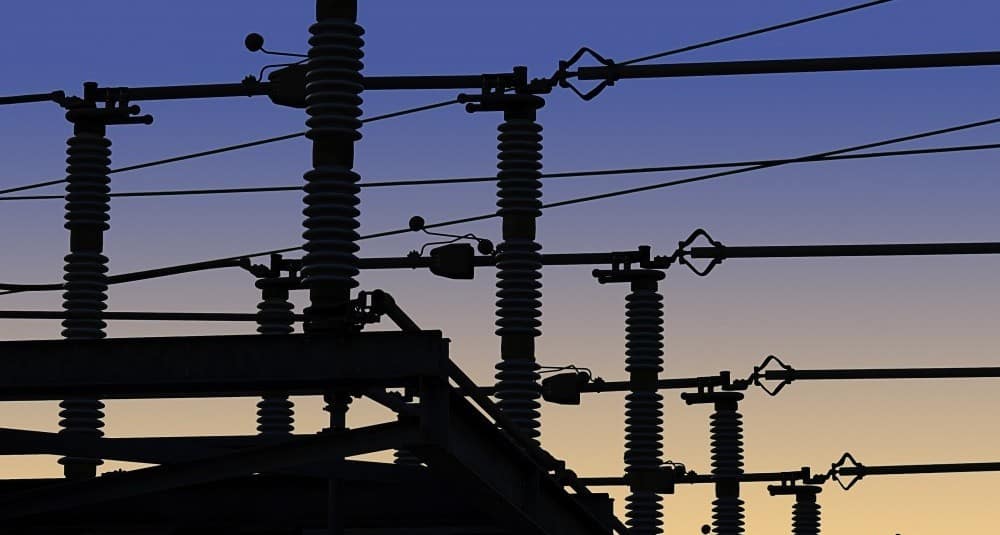Ok, so I’ve talked a lot about the cost of power outages in recent articles.
‘The average datacentre downtime incident costs £412,800’
‘Google’s 2013 outage cost them £100,000 per minute’
‘Amazon estimate that domain outages cost $1,104 per second’
Now clearly these are worrying figures, but in some ways they’re also difficult to relate to. After all, how many of us go to work at Amazon or Google?
And what does average mean, anyway?
So instead of simply listing figures, this article aims to help you understand the true cost of power outages to your business. For obvious reasons this calculation will never be perfect, but it will give you a solid understanding of the financial impact you can expect to incur in the event of an outage.

What’s the Damage?
Generally speaking, there are four major areas to consider when assessing the cost of power outages to your business:
1) Wasted wage/salary costs (and actual work losses)
2) Lost revenue
3) Remedial costs (E.g. resulting overtime, repairs, etc.)
4) Damages/penalties
In order to accurately assess how much each of these factors might cost, we’ll examine them individually.
In the above list, I’ve intentionally left out the potential for an outage to impact your reputation. In isolation, a single outage is unlikely to do lasting damage to your reputation, but if it happens frequently you’ll find your image begins to suffer.
There really is no accurate way to assess the financial cost of reputation damage, and as a consequence it won’t be included in the calculations discussed below. It is worth considering, however, as a non-monetary incentive to invest in preventative measures.
With all that said, let’s get down to the nitty gritty.
Wasted Wage/Salary Costs – This is a fairly simple one, just calculate how much you spend each hour on wages and salaries. You don’t have to go overboard and start including things like overheads and fixed costs, just take the annual cost, divide it by the average number of work days per year (accounting for holiday, sick leave, etc.), and divide that figure by the average number of working hours per day.
For example:
£1,000,000 / 230 days = £4,348 cost per day
£4,348 / 7.5 hours = £580 cost per hour
The only complexity arises if your employees are able to continue working in a limited fashion during an outage. To account for this, you’ll need to estimate how much of a hit their productivity will take as a percentage, and multiply your hourly cost by that figure.
So if our hypothetical business estimates a 70% hit to its employees’ productivity (i.e. they are able to work at 30% normal effectiveness during an outage), the new hours wage/salary cost will be:
£580 x 70% = £406 cost per hour
Lost Revenue – Again this is simple to calculate. Take your total sales revenue, divide it by the number of business days in a year, and divide that figure by the number of business hours per day.
For example:
£10,000,000 / 261 business days = £38,314 cost per day
£38,314 / 10 business hours = £3,831 cost per hour
In the event that it’s possible to process some sales during an outage, you can multiply this hourly figure by the percentage hit to productivity.
For instance, if your sales team will still be able to operate at 30% of their normal capacity, your ‘true’ cost per hour would be 70% of the figure calculated above.
£3,831 x 70% = £2,682 cost per hour
There is, however, a further complexity to this calculation.
Not all ‘lost’ sales will be permanently lost. Some determined customers will simply come back later, when the outage has run its course.
On the flip side, you run the risk of ‘losing’ formerly loyal customers. If they’re forced to go elsewhere because you’re unable to provide for them, they might find they actually prefer your competitors’ offering, or simply stick with it due to inertia.
The problem with both of these complexities is that they’re almost impossible to calculate. Whilst it’s not ideal, my recommendation would be to discount both from our initial calculations – The ultimate figure is never intended to be a perfect representation of the cost of downtime, it’s simply a tool to help you understand the likely impact of power outages to your business.
Remedial Costs – Unless you’ve already experienced an outage which you can use as the basis for this calculation, there’s going to be some guesswork here.
Effectively, we’re attempting to account for the cost of additional work or repairs that will be required as a direct result of power outage.
In some cases, this might be as simple as paying overtime rates for the hours required to make up for time lost. It could include additional temporary staff, weekend working, or sub-contracting.
If we’re talking about sales, which may well have taken a hit during the outage, you might feel that extra hours are required to get in touch with loyal customers, or contact those who were unable to make their desired purchases.
You might also choose to include the cost of additional marketing, designed to minimise negative effects of the outage.
With that said, there’s nothing terribly complicated to worry about here. Simply devote some time to considering what remedial costs you’re likely to incur as a direct result of power outage.
Once again, you’ll need to calculate an hourly figure for these costs. The simplest way to do this is to work out what you anticipate to be the total cost of remedial actions, and divide that by the average outage duration.
If you haven’t experienced many (or any) outages, you can use the industry average, which sits around the three-hour mark. That accounts for an outage lasting 1.5 – 2.5 hours, with the rest of the time being required to bring critical systems back online.
For example, if remedial costs came to £10,000 total, the calculation would simply be:
£5,000 / 3 hours = £1,667 cost per hour
Damages/Penalties – If downtime would put you at risk of contravening government regulations, or breaching strict SLAs, you may also need to consider the cost of fines or lost revenue resulting from this.
Consult with your legal team/advisor, and determine how much (if anything) you could be liable for in the event of unplanned downtime caused by power outages.
Unlike the other areas we’ve considered, we won’t be breaking this down to an hourly cost – Fines and levies are usually a set value, so unless you experience an abnormally long outage there shouldn’t be a need to break this down further.
Calculating the Cost to Your Business
Now that we’ve looked at the individual cost areas, it’s time to calculate how much an outage could actually cost you.
The following is a quick formula to do just that:
((Wasted salary cost p.h.+ Lost revenue p.h.+ Remedial cost p.h.)× Outage hours)+ Tot.damages
So if we were to use this formula for our hypothetical business, it would look like this:
((£406+£2,682+£1,667)×3)+£4,000 =£18,265
As you can see, we’ve assumed an outage length of three hours, and included a one-off fine of £4,000.
Hopefully this has served to demonstrate that calculating the cost of power outages to your business is not as hard as you might think. It certainly requires some thought, and won’t be a five-minute job, but I think you’ll find the result both instructive and eye opening.
Prevention, Not Cure
In reality, calculating the financial impact of power outages has one primary purpose: to justify the cost of preventative measures.
Without a solid understanding of what’s at stake, it’s easy to put off implementing expensive backup systems. Now that you have the figures to build a business case, it should be much easier to convince the board (or yourself) that simply hoping it never happens to you might not be the best idea after all.
With this firmly in mind, here are some of the steps you can take to minimise the risk of costly power outages:
Get Protected – There simply is no better way to avoid an outage than by implementing a high quality, rightsized uninterruptible power supply.
If your critical loads are not currently protected by an uninterruptible power supply, you’re opening yourself up to a world of problems… and I don’t just mean power outages.
When properly designed and implemented, an uninterruptible power supply will completely protect your critical loads from power events, including short outages.
UPS Battery Maintenance saves £££ – Here’s where a lot of businesses fall down.
They’ve invested in a quality uninterruptible power supply, but they haven’t put solid battery maintenance processes in place. This presents a huge problem.
If you’ve been following this blog series for a while, you might remember that we’ve talked about battery maintenance once before. Long story short, if you’re not maintaining your batteries, you might as well not have a uninterruptible power supply at all.
Standby Power is a must – OK, so a UPS protects you against power events/fluctuations and short outages… but what if it’s a long outage?
That’s were standby power comes into its own.
If you need to insure your critical loads against extended power outages, you’ll want to implement a diesel backup generator. The stand by generator will fire up as soon as your UPS system detects an outage, and once it’s up and running it will seamlessly take over the powering of critical loads from your UPS batteries.
Generators come in all shapes and sizes, and we carry a range of products to suit the needs of any business.
Don’t Generalise, Specialise – Maintenance is vital in any system, and UPS’ are not exception.
But did you know that in-house staff are responsible for 50-80% of all unplanned outages?
The problem is that when people are given responsibilities outside their area of expertise, the error rate is exacerbated. It’s no surprise really, someone who performs a particular task once every few months is rarely going to perform at the level of an expert who does it all day, every day.
So rather than lumber your in-house IT team with it, why not entrust your emergency systems to a team of specialists?
In reality it’s often no more expensive than training your own staff would be, and it vastly reduces the risk of uninterruptible power supply system failure.
Unsure? Get a Free Site Survey
If you’ve just calculated the potential cost of an unplanned outage to your business, it’s natural to be a bit worried… Particularly if you don’t know the first thing about how to protect against them.
Thankfully we do, and we’ll come and check out your site for free.
We can advise on sizing, infrastructure, design and implementation of UPS systems, as well as backup generators & UPS monitoring so get in touch today to arrange your free site survey.
If you require more information on any of our uninterruptible power supplies services or products please use our contact page or call 0800 731 3269.
Follow us on LinkedIn for regular industry articles & company information




